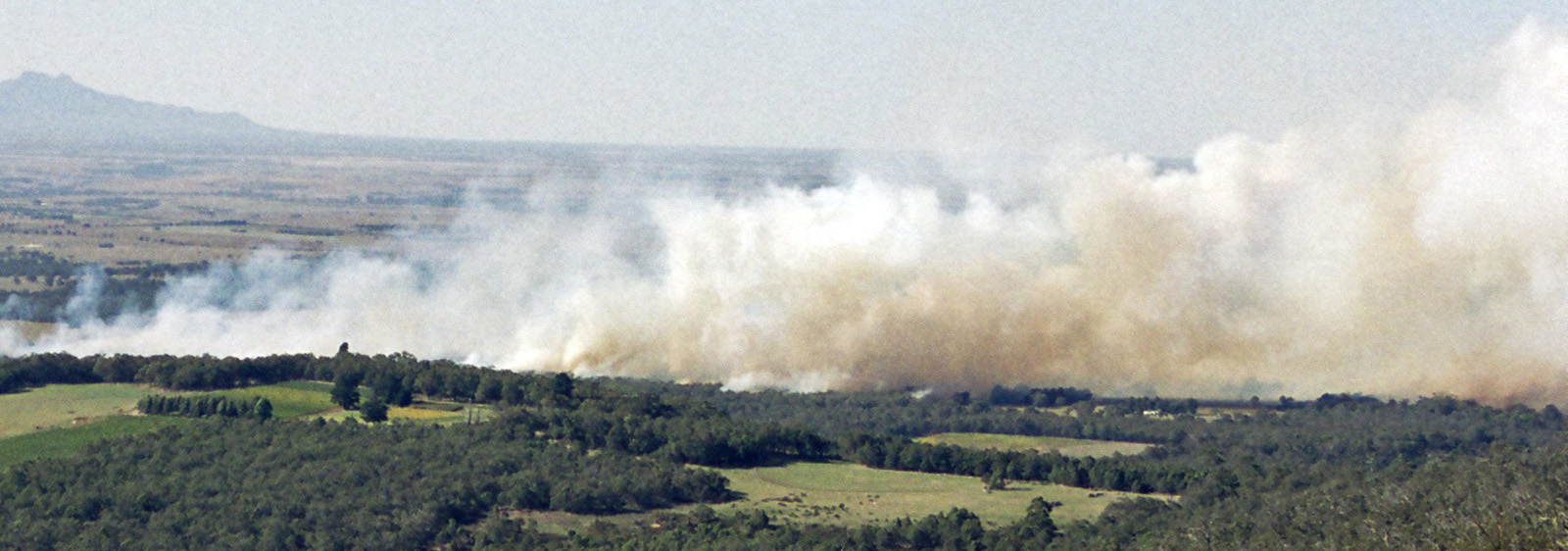
Climate change is not just an environmental challenge: its socioeconomic impacts are profound and far-reaching, touching every aspect of society. From agriculture to health, from urban infrastructure to coastal communities, the effects of climate change are evident and escalating.
The far-reaching effects
In agriculture, rising temperatures, more intense and frequent heatwaves and changing precipitation patterns pose significant threats to food security.1, 2 Crop yields decline as extreme weather events become more frequent and unpredictable, leading to increased food prices and economic instability. Smallholder farmers, who often lack the resources to adapt, are particularly vulnerable, exacerbating rural poverty and food insecurity.3
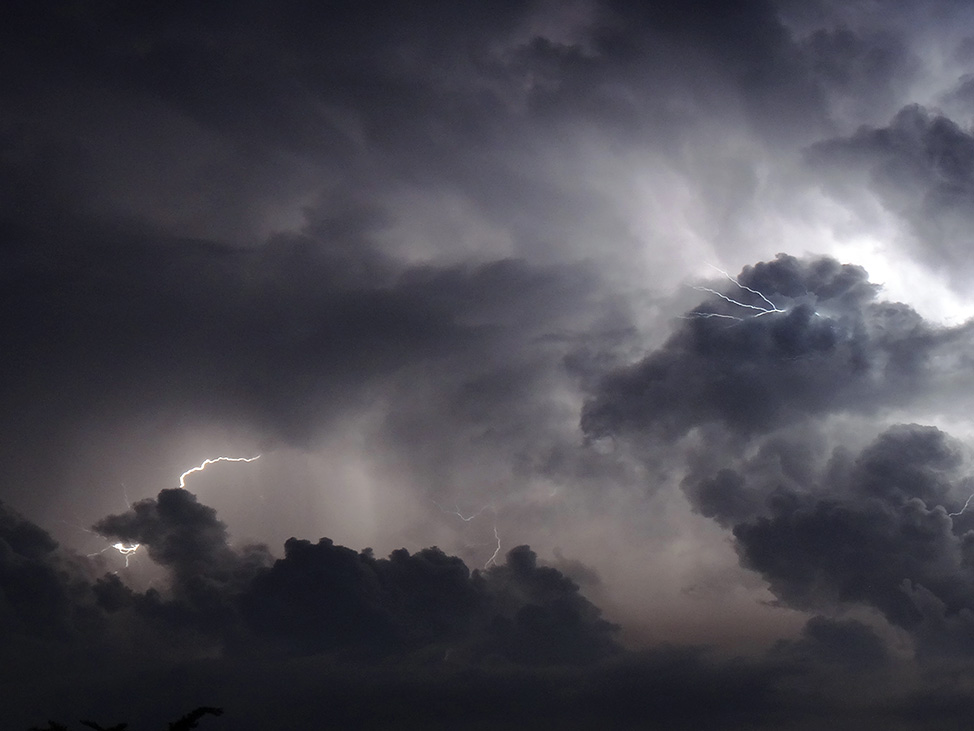 Coastal communities face the dual threats of sea-level rise and more intense storms.4 Erosion and inundation damage homes, infrastructure and livelihoods, displacing populations and disrupting local economies. The loss of coastal ecosystems further compounds these challenges, reducing natural defences against storm surges and exacerbating the impacts of climate-related disasters.
Coastal communities face the dual threats of sea-level rise and more intense storms.4 Erosion and inundation damage homes, infrastructure and livelihoods, displacing populations and disrupting local economies. The loss of coastal ecosystems further compounds these challenges, reducing natural defences against storm surges and exacerbating the impacts of climate-related disasters.
Health systems strain under the burden of climate-change-induced heatwaves, air pollution and the spread of vector-borne diseases.5, 6 Heat-related illnesses increase as temperatures rise, particularly affecting vulnerable populations such as the elderly and outdoor workers. Air pollution exacerbates respiratory conditions, leading to higher healthcare costs and decreased productivity. Vector-borne diseases, such as malaria and dengue fever, expand into new regions, placing additional strain on already overburdened health systems.
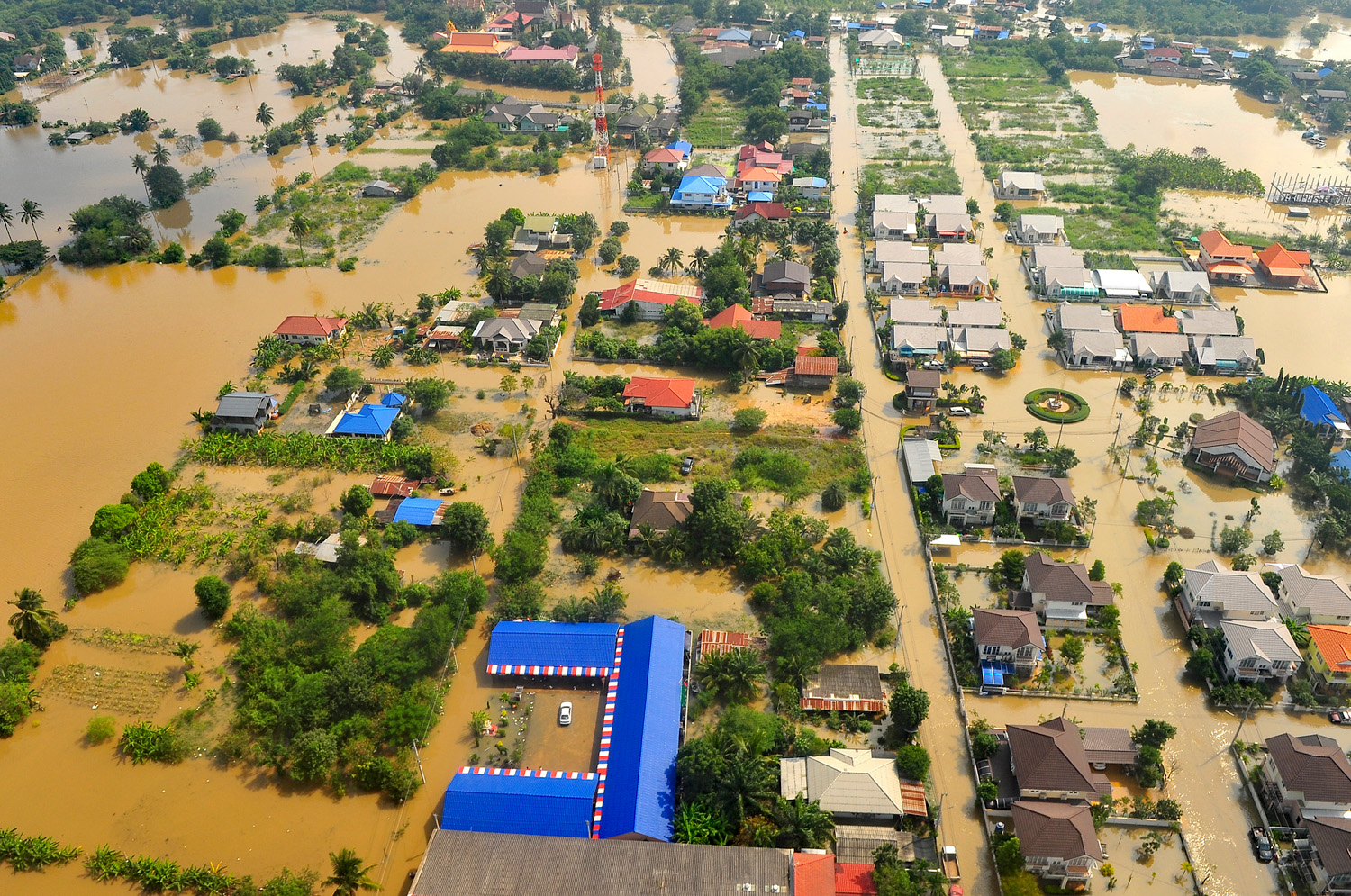 Displacement due to climate-related disasters amplifies social inequalities and challenges urban planning and infrastructure.7 Vulnerable communities, often located in low-lying areas or informal settlements, bear the brunt of climate impacts, facing the loss of homes, livelihoods and community cohesion. Inadequate housing and infrastructure increase the risks associated with extreme weather events, perpetuating cycles of poverty and vulnerability.
Displacement due to climate-related disasters amplifies social inequalities and challenges urban planning and infrastructure.7 Vulnerable communities, often located in low-lying areas or informal settlements, bear the brunt of climate impacts, facing the loss of homes, livelihoods and community cohesion. Inadequate housing and infrastructure increase the risks associated with extreme weather events, perpetuating cycles of poverty and vulnerability.
Furthermore, climate change exacerbates existing socioeconomic disparities, disproportionately affecting marginalised and vulnerable populations. Indigenous communities, women, children and people living in poverty are often the hardest hit, lacking access to resources, information, and adaptive capacity.8
Policy responses
Addressing the socioeconomic impacts of climate change requires co-ordinated action across sectors and scales. Policy interventions, such as investment in climate-resilient infrastructure and the promotion of sustainable agriculture practices, are essential for building resilience and reducing vulnerability. Community-led initiatives that prioritise local knowledge and empower marginalised groups are also critical for fostering adaptive capacity and promoting social equity.
To address these challenges, projects like CROSSEU, the new €5 million Horizon Europe project (that I have the pleasure to be part of), play a crucial role in enhancing our understanding of these impacts and developing actionable strategies for resilience and adaptation. One of the key contributions of CROSSEU lies in its development of a Decision Support System (DSS) that integrates tools, measures, and policy options to address these risks in a cross-sectoral and cross-regional perspective. This DSS will support (and hopefully improve) decision-making processes at various levels, from local to EU-wide, and facilitate the adoption of evidence-based policies and measures to enhance resilience and mitigate the impacts of climate change.
Would you like to know more about CROSSEU? Follow our journey and be informed of our publications and events in our new webpage: https://crosseu.eu/9
Articles/References
- Global food security under climate change
Proceedings of the National Academy of Sciences, Josef Schmidhuber and Francesco N Tubiello (11/12/2007)
- Reducing risks to food security from climate change
Global Food Security, Bruce M Campbell et al. (2016: 11, pp 34–43)
- The value-add of tailored seasonal forecast information for industry decision making
Climate, Clare Mary Goodess et al (16/10/2022)
- Assessing climate change impacts, sea level rise and storm surge risk in port cities: a case study on Copenhagen
Climatic change, Stéphane Hallegatte, Nicola Ranger, Olivier Mestre, Patrice Dumas, Jan Corfee-Morlot, Celine Herweijer and Robert Muir Wood (7/12/2010)
- Health risks of climate change: An assessment of uncertainties and its implications for adaptation policies
Environmental Health, J Arjan Wardekker, Arie de Jong, Leendert van Bree, Wim C Turkenburg and Jeroen P van der Sluijs (19/9/2012)
- Climate Change and Temperature-related Mortality: Implications for Health-related Climate Policy
Biomedical and Environmental Sciences, Tong Shi Lu, Jorn Olsen and Patrick L Kinney (2021: 34(5) pp 379–86 )
- Climate Change, Inequality, and Human Migration
IZA Discussion Paper No. 12623, Michał Burzyński, Christoph Deuster, Frédéric Docquier and Jaime de Melo (23/9/2019)
- The trap of climate change-induced “natural” disasters and inequality
Global Environmental Change, Federica Cappelli, Valeria Costantini and Davide Consoli (30/7/2021)
- Cross-sectoral Framework for Socio-Economic Resilience to Climate Change and Extreme Events in Europe
UEA Research Project, Nicholas Vasilakos, Katie Jenkins and Rachel Warren
Questions
- How do the socioeconomic impacts of climate change differ between rural and urban communities? What factors contribute to these disparities, and how can policies address them effectively?
- In what ways do vulnerable populations, such as indigenous communities and those living in poverty, bear the brunt of climate change impacts? How can we ensure that climate adaptation strategies prioritise their needs and promote social equity?
- The blog mentions the importance of community-led initiatives in building resilience to climate change. What examples of successful community-based adaptation projects can you identify, and what lessons can be learned from their implementation?
- How can governments and organisations collaborate to address the socioeconomic impacts of climate change while also promoting economic growth and development? What role do cross-sectoral partnerships play in building resilience and fostering sustainable practices?
 The development of open-source software and blockchain technology has enabled people to ‘hack’ capitalism – to present and provide alternatives to traditional modes of production, consumption and exchange. This has enabled more effective markets in second-hand products, new environmentally-friendly technologies and by-products that otherwise would have been negative externalities. Cryptocurrencies are increasingly providing the medium of exchange in such markets.
The development of open-source software and blockchain technology has enabled people to ‘hack’ capitalism – to present and provide alternatives to traditional modes of production, consumption and exchange. This has enabled more effective markets in second-hand products, new environmentally-friendly technologies and by-products that otherwise would have been negative externalities. Cryptocurrencies are increasingly providing the medium of exchange in such markets.
In a BBC podcast, Hacking Capitalism, Leo Johnson, head of PwC’s Disruption Practice and younger brother of Boris Johnson, argues that various changes to the way capitalism operates can make it much more effective in improving the lives of everyone, including those left behind in the current world. The changes can help address the failings of capitalism, such as climate change, environmental destruction, poverty and inequality, corruption, a reinforcement of economic and political power and the lack of general access to capital. And these changes are already taking place around the world and could lead to a new ‘golden age’ for capitalism.
 The changes are built on new attitudes and new technologies. New attitudes include regarding nature and the land as living resources that need respect. This would involve moving away from monocultures and deforestation and, with appropriate technologies (old and new), could lead to greater output, greater equality within agriculture and increased carbon absorption. The podcast gives examples from the developing and developed world of successful moves towards smaller-scale and more diversified agriculture that are much more sustainable. The rise in farmers’ markets provides an important mechanism to drive both demand and supply.
The changes are built on new attitudes and new technologies. New attitudes include regarding nature and the land as living resources that need respect. This would involve moving away from monocultures and deforestation and, with appropriate technologies (old and new), could lead to greater output, greater equality within agriculture and increased carbon absorption. The podcast gives examples from the developing and developed world of successful moves towards smaller-scale and more diversified agriculture that are much more sustainable. The rise in farmers’ markets provides an important mechanism to drive both demand and supply.
In the current model of capitalism there are many barriers to prevent the poor from benefiting from the system. As the podcast states, there are some 2 billion people across the world with no access to finance, 2.6 billion without access to sanitation, 1.2 billion without access to power – a set of barriers that stops capitalism from unlocking the skills and productivity of the many.
 These problems were made worse by the response to the financial crisis of 2007–8, when governments chose to save the existing model of capitalism by propping up financial markets through quantitative easing, which massively inflated asset prices and aggravated the problem of inequality. They missed the opportunity of creating money to invest in alternative technologies and infrastructure.
These problems were made worse by the response to the financial crisis of 2007–8, when governments chose to save the existing model of capitalism by propping up financial markets through quantitative easing, which massively inflated asset prices and aggravated the problem of inequality. They missed the opportunity of creating money to invest in alternative technologies and infrastructure.
New technology is the key to developing this new fairer, more sustainable model of capitalism. Such technologies could be developed (and are being in many cases) by co-operative, open-source methods. Many people, through these methods, could contribute to the development of products and their adaptation to meet different needs. The barriers of intellectual property rights are by-passed.
New technologies that allow easy rental or sharing of equipment (such as tractors) by poor farmers can transform lives and massively increase productivity. So too can the development of cryptocurrencies to allow access to finance for small farmers and businesses. This is particularly important in countries where access to traditional finance is restricted and/or where the currency is not stable with high inflation rates.
Blockchain technology can also help to drive second-hand markets by providing greater transparency and thereby cut waste. Manufacturers could take a stake in such markets through a process of certification or transfer.
 A final hack is one that can directly tackle the problem of externalities – one of the greatest weaknesses of conventional capitalism. New technologies can support ways of rewarding people for reducing external costs, such as paying indigenous people for protecting the land or forests. Carbon markets have been developed in recent years. Perhaps the best example is the European Emissions Trading Scheme (EMS). But so far they have been developed in isolation. If the revenues generated could go directly to those involved in environmental protection, this would help further to internalise the externalities. The podcasts gives an example of a technology used in the Amazon to identify the environmental benefits of protecting rain forests that can then be used to allow reliable payments to the indigenous people though blockchain currencies.
A final hack is one that can directly tackle the problem of externalities – one of the greatest weaknesses of conventional capitalism. New technologies can support ways of rewarding people for reducing external costs, such as paying indigenous people for protecting the land or forests. Carbon markets have been developed in recent years. Perhaps the best example is the European Emissions Trading Scheme (EMS). But so far they have been developed in isolation. If the revenues generated could go directly to those involved in environmental protection, this would help further to internalise the externalities. The podcasts gives an example of a technology used in the Amazon to identify the environmental benefits of protecting rain forests that can then be used to allow reliable payments to the indigenous people though blockchain currencies.
Podcast
Questions
- What are the main reasons why capitalism has led to such great inequality?
- What do you understand by ‘hacking’ capitalism?
- How is open-source software relevant to the development of technology that can have broad benefits across society?
- Does the current model of capitalism encourage a self-centred approach to life?
- How might blockchain technology help in the development of a more inclusive and fairer form of capitalism?
- How might farmers’ co-operatives encourage rural development?
- What are the political obstacles to the developments considered in the podcast?
 The Office for National Statistics (ONS) reported that the quantity of retail sales in the UK was 3.9% higher in August than it had been in July. However strong price competition meant that the value of these sales increased by only 0.4%. What were the key factors driving the big increase in the quantity of sales? Was it simply the response of consumers to falling prices?
The Office for National Statistics (ONS) reported that the quantity of retail sales in the UK was 3.9% higher in August than it had been in July. However strong price competition meant that the value of these sales increased by only 0.4%. What were the key factors driving the big increase in the quantity of sales? Was it simply the response of consumers to falling prices?
The data indicated that there was strong demand for goods associated with the housing market such as carpets, fridges and cookers. Spending on furniture increased very rapidly with sales rising by 24% over a 12 month period. Flat packed furniture proved to be particularly popular with consumers.
There was also strong demand for electrical goods and more specifically vacuum cleaners. The ONS estimated that a boom in the sale of vacuum cleaners in August was responsible for 25% of the increase in retail sales.
Why did the sales of vacuum cleaners increase so rapidly in August? Did UK households suddenly decide to keep their houses cleaner? The sales data shows that certain types of vacuum cleaners sold in much larger numbers than others.
For example, Tesco reported a 44% increase in the sales of 2,000 watt vacuum cleaners in the last two weeks in August while the Co-op reported an increase of 38%. Referring to the last weekend in August, the head of small domestic appliances at the on-line retailer ao.com stated that
We saw a huge surge in sales of corded vacuums over 1,600 watts over the weekend, with sales quadrupling.
There were also reports that a significant number of customers were buying more than one vacuum cleaner with these larger motors.
The key reason for the sudden surge in demand was the implementation of new regulations by the European Union as part of its energy efficiency directive. The ultimate objective of this directive is to reduce climate change. The specific policy that appears to have had such a big impact on consumers in the UK was the ban imposed on firms in the EU from making or importing vacuum cleaners that have motors above 1600 watts. This ban came into effect on the 1st September 2014.
A spokesperson for the consumer group Which? stated in August that
If you’re in the market for a powerful vacuum, you should act quickly, before all the models currently sell out. A Best Buy 2,200-watt vacuum costs around £27 a year to run in electricity – only around £8 more than the best scoring 1,600-watt we’ve tested.
The EU plans to reduce the maximum permitted wattage in vacuum cleaners to 900 watts in 2017. Restrictions have already been imposed on bigger electrical appliances such as televisions, washing machines and refrigerators. The EUs Ecodesign directive may also be extended to a range of smaller electrical appliances such as toasters and hair dressers in the future. It’ll be interesting to see if consumers respond in the same way to regulations imposed by the EU in the future.
Ten days left to vacuum up a powerful cleaner BBC (21/08/14)
Housing boom, food discounting and vacuum ban boost UK spending The Guardian, Larry Elliott, Phillip Inman, Lisa Bachelor (18/9/14)
UK retail sales boosted by vacuum cleaner sales BBC (18/9/14)
Retailers sell out of vacuum cleaners ahead of EU ban The Telegraph, Elliot Pinkham (30/8/14)
Power surge! Fourfold rise in sales of super vacuums: Some customers buying two or more models to beat new EU regulations Daily Mail, Andrew Levy (1/9/14)
Energy Efficiency Directive European Commission (accessed on 24/9/14)
Vacuum cleaner splurge pushes up UK retail sales The Guardian, Phillip Inman (18/9/14)
Questions
- Using a demand and supply diagram, illustrate what has happened in the market for high wattage vacuum cleaners in August. Pay particular attention in your answer to the role of expectations.
- What did your previous diagram predict would happen to the price of high wattage vacuum cleaners in August? Did this in fact happen?
- A fully informed rational consumer may purchase a higher wattage vacuum cleaner if they consider that the improvement in cleaning performance is greater than the extra cost of purchasing and using the cleaner. Can you provide an economic rationale for banning the sale of these machines in these circumstances?
- Using a demand and supply diagram illustrate the impact of banning the sale of a product in a competitive market.
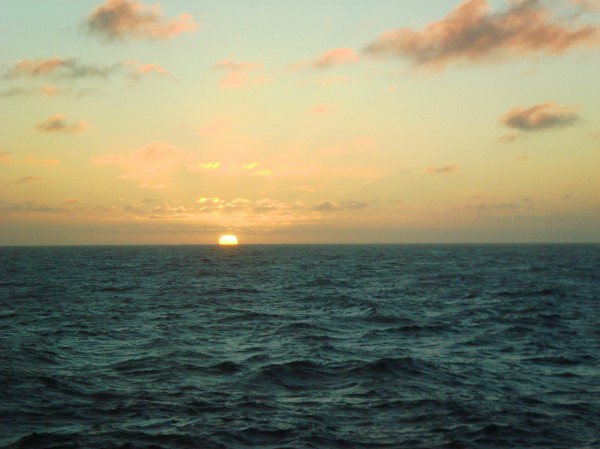 In many parts of the world, life in the oceans is dying out. The term ‘dead zones’ is used to describe seas that are devoid of marine life. And these zones are growing in size and number.
In many parts of the world, life in the oceans is dying out. The term ‘dead zones’ is used to describe seas that are devoid of marine life. And these zones are growing in size and number.
It’s not just the decline in fish and other marine species that’s worrying environmentalists and many others; it’s a growth in rubbish. Part of this is caused by natural disasters, such as the 2011 Tsunami in Japan that washed huge amounts of debris into the Pacific Ocean. But much of it is caused by rubbish carried down rivers and into the seas, or rubbish jettisoned from ships. The problem is particularly acute in areas of the oceans where currents circulate the rubbish into huge rubbish dumps. There are two such areas either side of Hawaii in the Pacific. Both are vast.
The first article below tells the tale of Newcastle (Australia) yachtsman Ivan Macfadyen. He completed the 2013 Melbourne to Osaka double handed yacht race earlier this year as skipper of his yacht Funnelweb and then went on to bring the yacht home to Australia via America and race the famous Trans-Pac Yacht Race from Los Angeles to Hawaii along the way.
Exactly 10 years before, when [he] had sailed exactly the same course from Melbourne to Osaka, all he’d had to do to catch a fish from the ocean between Brisbane and Japan was throw out a baited line.
“There was not one of the 28 days on that portion of the trip when we didn’t catch a good-sized fish to cook up and eat with some rice,” Macfadyen recalled. But this time, on that whole long leg of sea journey, the total catch was two. No fish. No birds. Hardly a sign of life at all.
After reaching Osaka in Japan, they sailed on to San Francisco via Hawaii.
“After we left Japan, it felt as if the ocean itself was dead,” Macfadyen said. “We hardly saw any living things. We saw one whale, sort of rolling helplessly on the surface with what looked like a big tumour on its head. It was pretty sickening.”
“I’ve done a lot of miles on the ocean in my life and I’m used to seeing turtles, dolphins, sharks and big flurries of feeding birds. But this time, for 3000 nautical miles there was nothing alive to be seen.”
In place of the missing life was garbage in astounding volumes.
As economists, you should readily understand that here we have a case of over-exploited common resources – a Tragedy of the Commons of epic proportions. One ship’s rubbish may make a tiny difference, but when the cost of dumping is near zero and when the oceans are not policed, what is rational for a single ship becomes a disaster when repeated tens of thousands of times by other ships
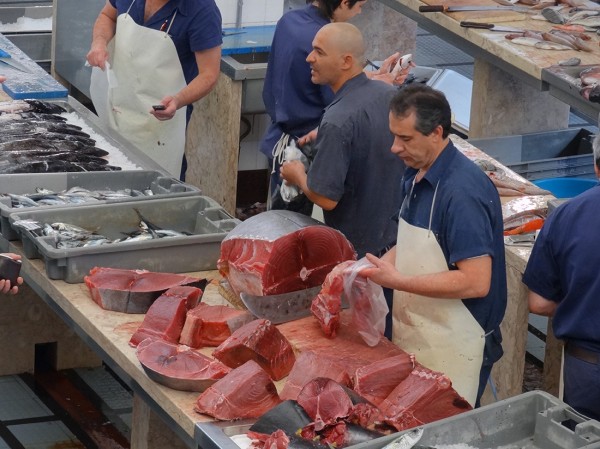 Again, overfishing is the result of seemingly rational behaviour by crews of individual fishing boats. But as Economics (8th edition) points out on pages 328–30:
Again, overfishing is the result of seemingly rational behaviour by crews of individual fishing boats. But as Economics (8th edition) points out on pages 328–30:
Common resources are not owned but are available free of charge to anyone. Examples include the air we breathe and the oceans for fishing. Like public goods, they are non-excludable. For example, fishing boats can take as many fish as they are able from the open seas. There is no ‘owner’ of the fish to stop them. As long as there are plentiful stocks of fish, there is no problem.
But as more people fish the seas, so fish stocks are likely to run down. This is where common resources differ from public goods. There is rivalry. One person’s use of a common resource diminishes the amount available for others. This result is an overuse of common resources. This is why fish stocks in many parts of the world are severely depleted, why virgin forests are disappearing (cut down for timber or firewood), why many roads are so congested and why the atmosphere is becoming so polluted (being used as a common ‘dump’ for emissions). In each case, a resource that is freely available is overused. This has become known as the tragedy of the commons.
… When I use a common resource, I am reducing the amount available for others. I am imposing a cost on other people: an external cost. If I am motivated purely by self-interest, I will not take these external costs into account.
Try doing some research to find out just what has been happening to the state of the oceans in recent years.
Articles
The ocean is broken Newcastle Herald (Australia), Greg Ray (18/10/13)
Our Planet Is Exploding With Ocean Dead Zones Business Insider, Dina Spector (26/6/13)
Health of oceans ‘declining fast’ BBC News, Roger Harrabin (3/10/13)
Chaos in the Oceans Huffington Post, Evaggelos Vallianatos (14/10/13)
Ocean Health Suffers from Overfishing, Index Finds Live Science, TechMedia, Douglas Main (16/10/13)
Information
Dead zone (ecology) Wikipedia
Common Fisheries Policy Wikipedia
Reform of the Common Fisheries Policy Fisheries DG, European Commission
Ocean Health Index OHI
Questions
- How does a common resource differ from a public good?
- What is the equilibrium use of a common resource? Demonstrate this with a diagram.
- What is the socially efficient use of a common resource such as a fishing ground?
- In what ways have modern ‘industrial’ methods of fishing compounded the problem of the overuse of fishing grounds?
- What criteria, other than social efficiency, could be used to determine the optimal use of a common resource?
- Explain how the Common Fisheries Policy of the EU works. Are there any lessons that can be learned by other groups of countries from the experience of the CFP?
- Are there any ‘good news’ stories about the state of any of the oceans? If so, to what extent are they the result of deliberate human action?
- To what extent is the Internet a common resource?
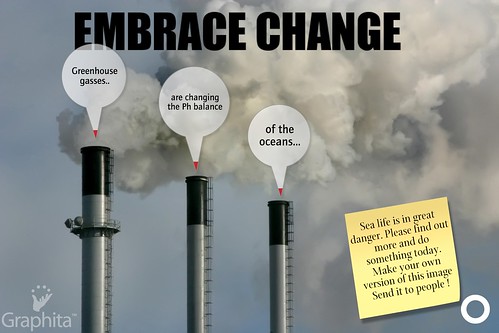 No market is perfect and when the market mechanism fails to deliver an efficient allocation of resources, we say the market fails and hence there is justification for some government intervention. From a monopolist dominating an industry to a manufacturing firm pumping out pollution, there are countless examples of market failure.
No market is perfect and when the market mechanism fails to deliver an efficient allocation of resources, we say the market fails and hence there is justification for some government intervention. From a monopolist dominating an industry to a manufacturing firm pumping out pollution, there are countless examples of market failure.
The Guardian is creating a guide to climate change, covering areas from politics to economics. The problem of climate change has been well documented and this blog considers a particular issue – the case for climate change or the environment as a market failure. In many cases just one market failure can be identified, for example an externality or a missing market. However, one of the key problems with climate change is that there are several market failures: externalities in the form of pollution from greenhouse gases; poor information; minimal incentives; the problem of the environment as a common resource and the immobility of factors of production, to name a few. Each contributes towards a misallocation of resources and prevents the welfare of society from being maximised.
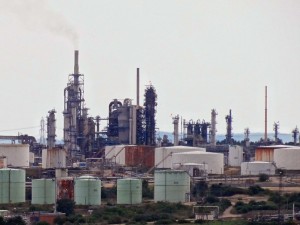 When a market fails, intervention is justified and economists argue for a variety of policies to tackle the above failures. In a first-best world, there is only one market failure to tackle, but in the case of the environment, policy must be designed carefully to take into account the fact that there are numerous failings of the free market. Second-best solutions are needed. Furthermore, as the problem of climate change will be felt by everyone, whether in a developed or a developing country, international attention is needed. The two articles below are part of the Guardian’s ultimate climate change guide and consider a huge range of economic issues relating to the problem of environmental market failure.
When a market fails, intervention is justified and economists argue for a variety of policies to tackle the above failures. In a first-best world, there is only one market failure to tackle, but in the case of the environment, policy must be designed carefully to take into account the fact that there are numerous failings of the free market. Second-best solutions are needed. Furthermore, as the problem of climate change will be felt by everyone, whether in a developed or a developing country, international attention is needed. The two articles below are part of the Guardian’s ultimate climate change guide and consider a huge range of economic issues relating to the problem of environmental market failure.
Why do economists describe climate change as a ‘market failure’? Guardian, Grantham Research Institute and Dunca Clark (21/5/12)
What is the economic cost of climate change? Guardian (16/2/11)
Questions
- What is meant by market failure?
- What are the market failures associated with the environment and climate change? In each case, explain how the issue causes an inefficient allocation of resources and thus causes the market to fail? You may find diagrams useful!
- What is meant by the first-best and second-best world?
- What does a second-best solution aim to do?
- Using diagrams to help your explanation, show how a tax on pollution will have an effect in a first best world, where the only market failure is a negative externality and in a second best world, where the firm in question is also a monopolist.
- What solutions are there to the problem of climate change? How effective are they likely to be?
- Does the need to tackle climate change require international co-operation? Can you use game theory to help your explanation?!

 Coastal communities face the dual threats of sea-level rise and more intense storms.4 Erosion and inundation damage homes, infrastructure and livelihoods, displacing populations and disrupting local economies. The loss of coastal ecosystems further compounds these challenges, reducing natural defences against storm surges and exacerbating the impacts of climate-related disasters.
Coastal communities face the dual threats of sea-level rise and more intense storms.4 Erosion and inundation damage homes, infrastructure and livelihoods, displacing populations and disrupting local economies. The loss of coastal ecosystems further compounds these challenges, reducing natural defences against storm surges and exacerbating the impacts of climate-related disasters. Displacement due to climate-related disasters amplifies social inequalities and challenges urban planning and infrastructure.7 Vulnerable communities, often located in low-lying areas or informal settlements, bear the brunt of climate impacts, facing the loss of homes, livelihoods and community cohesion. Inadequate housing and infrastructure increase the risks associated with extreme weather events, perpetuating cycles of poverty and vulnerability.
Displacement due to climate-related disasters amplifies social inequalities and challenges urban planning and infrastructure.7 Vulnerable communities, often located in low-lying areas or informal settlements, bear the brunt of climate impacts, facing the loss of homes, livelihoods and community cohesion. Inadequate housing and infrastructure increase the risks associated with extreme weather events, perpetuating cycles of poverty and vulnerability. The development of open-source software and blockchain technology has enabled people to ‘hack’ capitalism – to present and provide alternatives to traditional modes of production, consumption and exchange. This has enabled more effective markets in second-hand products, new environmentally-friendly technologies and by-products that otherwise would have been negative externalities.
The development of open-source software and blockchain technology has enabled people to ‘hack’ capitalism – to present and provide alternatives to traditional modes of production, consumption and exchange. This has enabled more effective markets in second-hand products, new environmentally-friendly technologies and by-products that otherwise would have been negative externalities.  The changes are built on new attitudes and new technologies. New attitudes include regarding nature and the land as living resources that need respect. This would involve moving away from monocultures and deforestation and, with appropriate technologies (old and new), could lead to greater output, greater equality within agriculture and increased carbon absorption. The podcast gives examples from the developing and developed world of successful moves towards smaller-scale and more diversified agriculture that are much more sustainable. The rise in farmers’ markets provides an important mechanism to drive both demand and supply.
The changes are built on new attitudes and new technologies. New attitudes include regarding nature and the land as living resources that need respect. This would involve moving away from monocultures and deforestation and, with appropriate technologies (old and new), could lead to greater output, greater equality within agriculture and increased carbon absorption. The podcast gives examples from the developing and developed world of successful moves towards smaller-scale and more diversified agriculture that are much more sustainable. The rise in farmers’ markets provides an important mechanism to drive both demand and supply. These problems were made worse by the response to the financial crisis of 2007–8, when governments chose to save the existing model of capitalism by propping up financial markets through quantitative easing, which massively inflated asset prices and aggravated the problem of inequality. They missed the opportunity of creating money to invest in alternative technologies and infrastructure.
These problems were made worse by the response to the financial crisis of 2007–8, when governments chose to save the existing model of capitalism by propping up financial markets through quantitative easing, which massively inflated asset prices and aggravated the problem of inequality. They missed the opportunity of creating money to invest in alternative technologies and infrastructure. A final hack is one that can directly tackle the problem of externalities – one of the greatest weaknesses of conventional capitalism. New technologies can support ways of rewarding people for reducing external costs, such as paying indigenous people for protecting the land or forests. Carbon markets have been developed in recent years. Perhaps the best example is the European Emissions Trading Scheme (EMS). But so far they have been developed in isolation. If the revenues generated could go directly to those involved in environmental protection, this would help further to internalise the externalities. The podcasts gives an example of a technology used in the Amazon to identify the environmental benefits of protecting rain forests that can then be used to allow reliable payments to the indigenous people though blockchain currencies.
A final hack is one that can directly tackle the problem of externalities – one of the greatest weaknesses of conventional capitalism. New technologies can support ways of rewarding people for reducing external costs, such as paying indigenous people for protecting the land or forests. Carbon markets have been developed in recent years. Perhaps the best example is the European Emissions Trading Scheme (EMS). But so far they have been developed in isolation. If the revenues generated could go directly to those involved in environmental protection, this would help further to internalise the externalities. The podcasts gives an example of a technology used in the Amazon to identify the environmental benefits of protecting rain forests that can then be used to allow reliable payments to the indigenous people though blockchain currencies.




